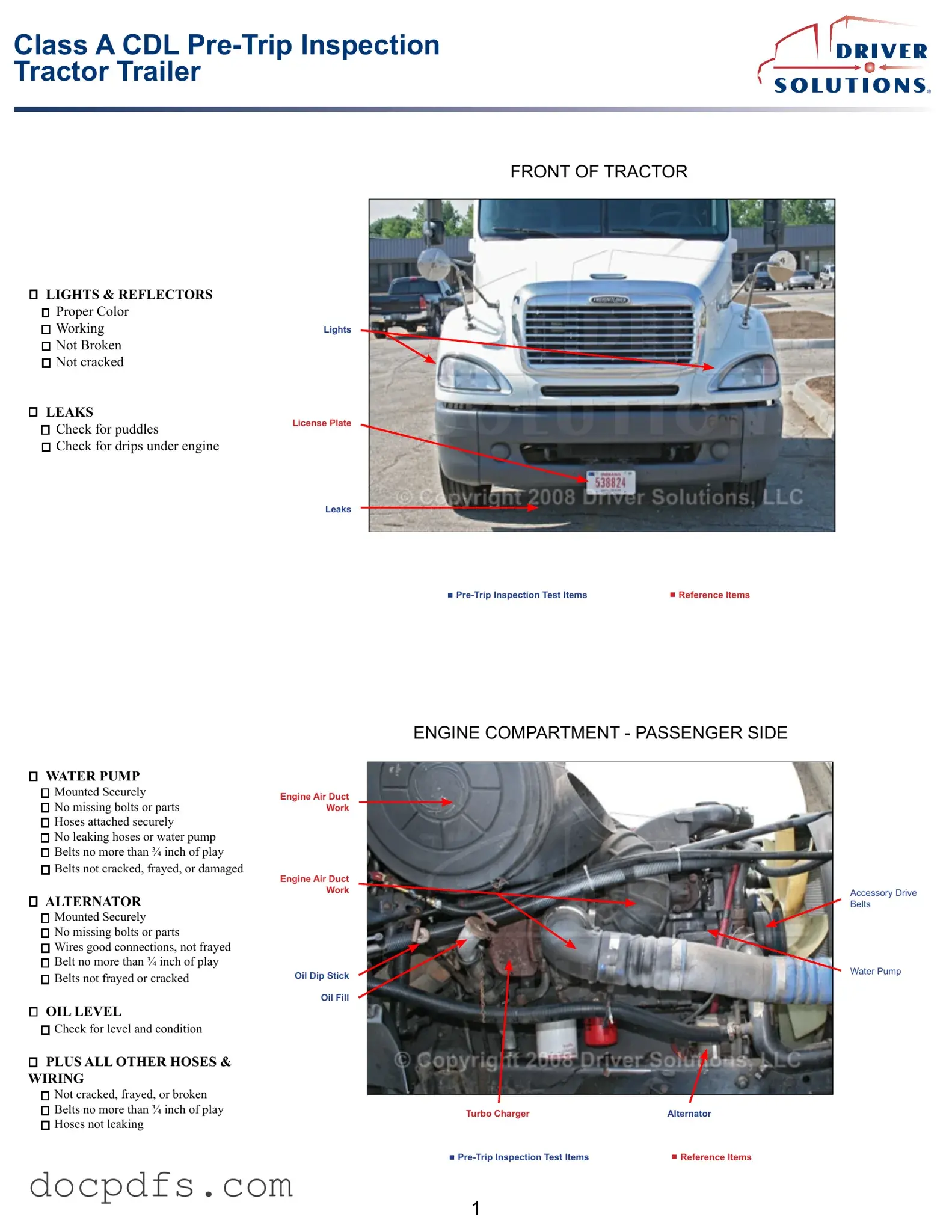The Pre Trip Inspection Checklist form is a document used primarily by drivers to ensure that their vehicle is safe and operational before embarking on a trip. This checklist helps identify any potential issues that could affect the vehicle's performance or safety during travel.
Why is a Pre Trip Inspection important?
Conducting a Pre Trip Inspection is crucial for several reasons:
-
It enhances safety for the driver, passengers, and other road users.
-
It helps in identifying mechanical issues that could lead to breakdowns.
-
It ensures compliance with legal regulations regarding vehicle maintenance.
-
It can prevent costly repairs by catching problems early.
What items are typically included in the checklist?
A comprehensive Pre Trip Inspection Checklist generally includes the following categories:
-
Exterior Inspection:
Check for any visible damage, tire condition, and fluid leaks.
-
Interior Inspection:
Ensure that the dashboard indicators are functioning and that safety equipment is present.
-
Under the Hood:
Inspect fluid levels, belts, and hoses for wear and tear.
-
Brakes:
Test brake functionality and check for any signs of wear.
The Pre Trip Inspection should be performed before every trip. Regular inspections are vital, especially for commercial drivers who may be subject to stricter regulations. Consistency in this practice helps maintain vehicle safety and reliability.
Who is responsible for completing the Pre Trip Inspection?
The driver is primarily responsible for completing the Pre Trip Inspection. However, in some organizations, maintenance personnel may assist by providing additional support or training to ensure that drivers are equipped to perform thorough inspections.
What should a driver do if they find an issue during the inspection?
If a driver identifies any issues during the Pre Trip Inspection, they should take immediate action. This may involve:
-
Documenting the issue on the checklist.
-
Reporting the problem to a supervisor or maintenance team.
-
Refraining from operating the vehicle until the issue is resolved.
While there is no universally mandated format for the Pre Trip Inspection Checklist, many organizations develop their own templates to suit their needs. The checklist should be clear, easy to understand, and cover all necessary inspection points to ensure thoroughness.
Can electronic devices be used for the Pre Trip Inspection?
Yes, electronic devices can be utilized for conducting Pre Trip Inspections. Many companies now use mobile applications that allow drivers to complete checklists digitally. These applications can enhance efficiency and ensure that records are easily accessible for future reference.
Failing to perform a Pre Trip Inspection can lead to serious consequences, including:
-
Increased risk of accidents due to vehicle malfunction.
-
Legal repercussions for non-compliance with safety regulations.
-
Financial liabilities arising from accidents or breakdowns.
